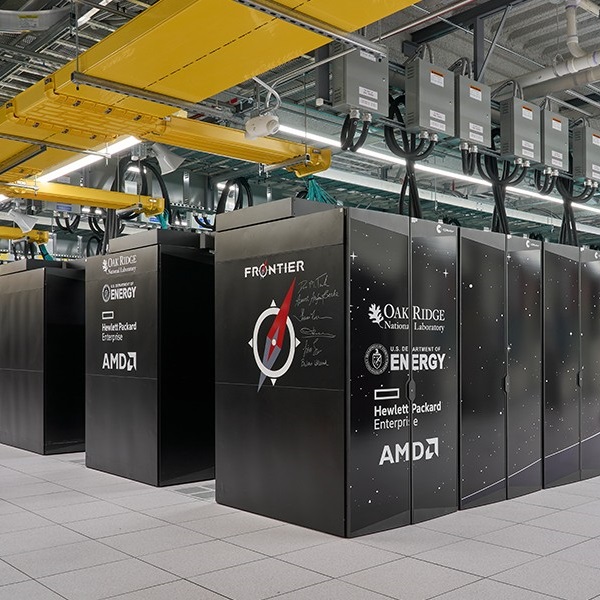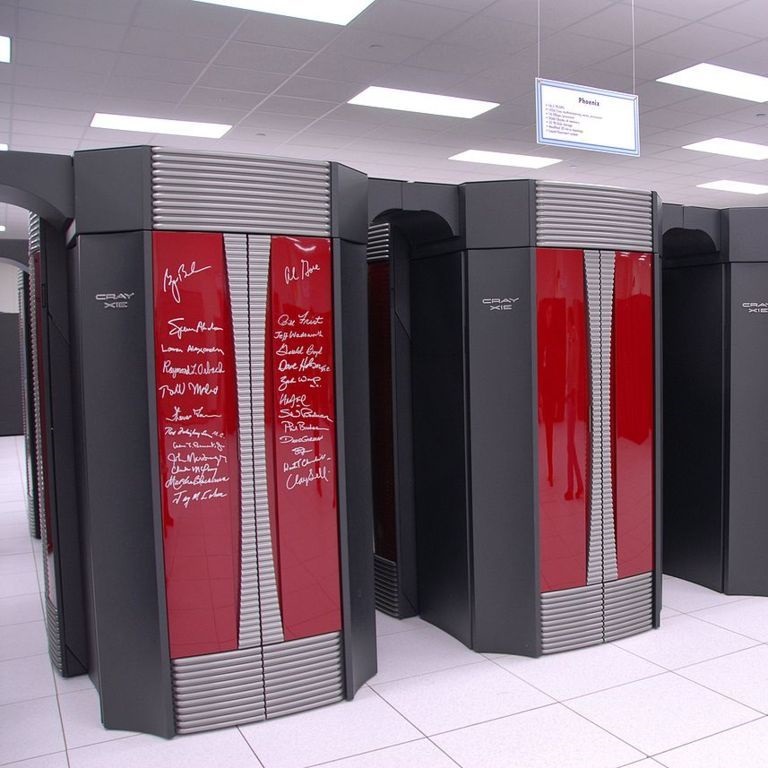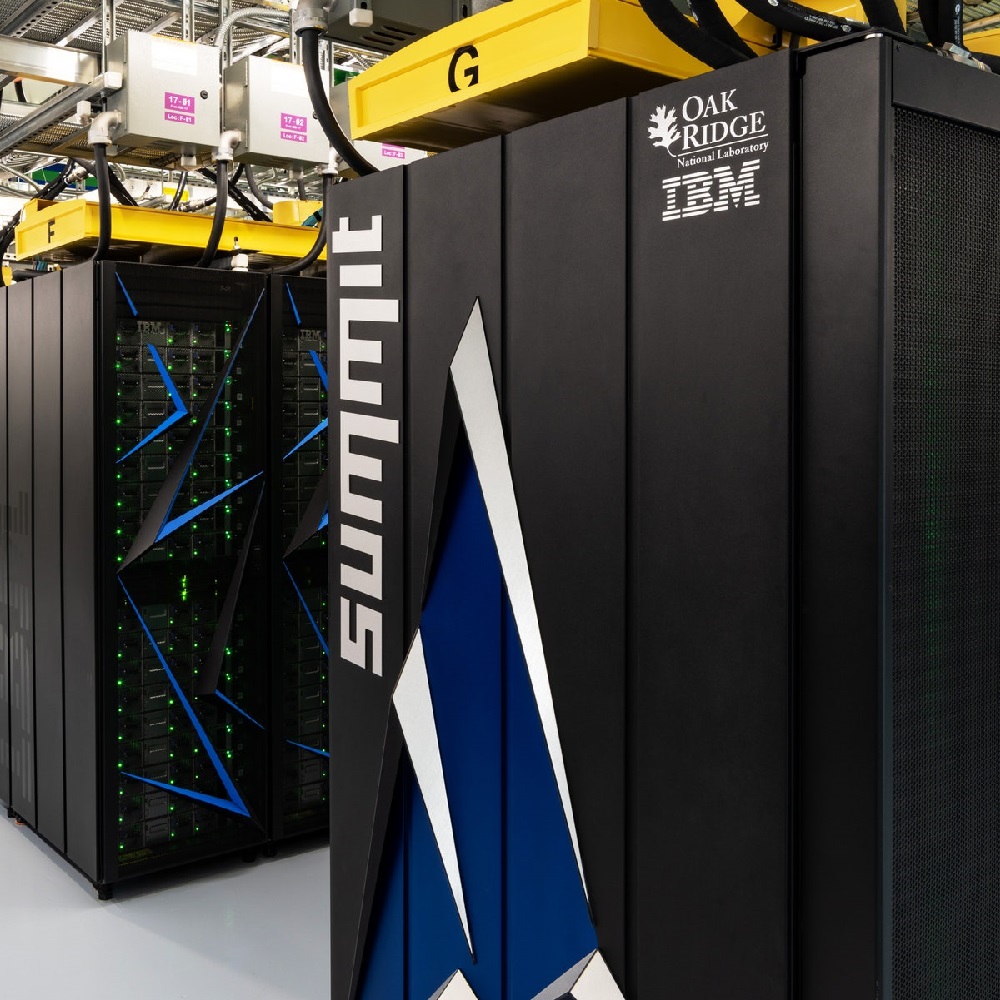Introduction to Exascale Supercomputers
Exascale supercomputers represent a significant leap in computing power. These systems can execute more than one quintillion (10^18) floating-point operations per second (FLOPS). The development of exascale supercomputers marks a major milestone in the capability to process vast amounts of data and perform complex calculations at speeds unimaginable a few decades ago. They serve as powerful tools for scientific research, enabling breakthroughs in areas such as climate modeling, biomedical research, and nuclear physics.
The construction and operation of such machines require advanced technological components and substantial infrastructure. They incorporate thousands of CPUs and GPUs, making them far more powerful than standard computers. Exascale supercomputers also demand sophisticated cooling systems and significant electrical power to manage their intense processing capabilities.
Scientists and researchers use these supercomputers to tackle some of the most challenging problems that require analyzing large datasets and performing extensive calculations. Whether for studying the universe’s origins, forecasting weather with high precision, or designing new materials, exascale supercomputers play a pivotal role in advancing knowledge and technology.
Key Components of Top Supercomputers
When it comes to the world’s fastest computers, the hardware is key to their extraordinary performance. Below are the critical components that make these supercomputers stand out from the rest.
- CPUs and GPUs: Unlike regular computers, top supercomputers have thousands of CPUs and GPUs. These are far more powerful than what you might find in a standard desktop or laptop.
- Cooling Systems: The extreme processing power generates a lot of heat. Advanced cooling systems are crucial to maintain performance.
- Infrastructure: To manage their operations, these supercomputers need robust infrastructure. This includes large facilities with ample space and power supplies.
- FLOPS Measure: The floating-point operations per second, or FLOPS, indicate their computing power. The fastest supercomputers boast figures in the exaFLOPS, far surpassing typical computers.
- Networking Capabilities: High-speed networking is essential for these machines to communicate effectively, internally and externally.
- Energy Efficiency: While power-hungry, many modern supercomputers are designed to be as energy-efficient as possible.
- Software Systems: They run on specialized software tailored to large-scale computing tasks and simulations.
These components are not only costly but require specialized knowledge to design, build, and maintain. As technology continues to advance, we can only expect these supercomputers to become even more powerful and sophisticated, further opening the doors to groundbreaking research across numerous scientific fields.
Frontier: The First Exascale Supercomputer
Frontier marks a significant achievement in computing history. Housed at Tennessee’s Oak Ridge National Laboratory, it is known as the first exascale supercomputer in the world. With a mind-boggling performance of 1.2 exaFLOPS, Frontier can execute over one quintillion calculations per second. This computing giant went online in August 2022 and has since set the benchmark for speed and capacity.
Location and Specifications
The Frontier supercomputer is located in the United States, within the confines of the Oak Ridge National Laboratory in Tennessee. It boasts an impressive infrastructure with advanced components such as AMD EPYC 64-core CPUs and AMD Instinct MI250X GPUs. These components work in tandem to achieve its unparalleled performance. The system requires a sophisticated cooling system and an extensive power supply setup to function efficiently.
Initial and Future Applications
Initially envisioned for research in areas like cancer, drug discovery, and nuclear fusion, Frontier’s applications are vast and versatile. Scientists also plan to utilize it for developing new technologies in transportation and medicine. Evan Schneider, a computational astrophysics expert, has expressed intentions to simulate the Milky Way’s evolution using Frontier’s capabilities. As technology progresses, Frontier’s applications will likely expand, contributing to numerous scientific breakthroughs.
Aurora: Potential to Surpass Frontier
Aurora, housed at the Argonne Leadership Computing Facility in Illinois, is poised to potentially outperform the Frontier supercomputer. First activated in June 2023, this supercomputer has quickly made a name for itself in the realm of exascale computing.
Technological Innovations and Partnerships
Aurora is a result of a collaboration between Intel and HPE. It boasts Intel Xeon Max Series CPUs and Intel Data Center Max Series GPUs, making it a technological powerhouse. The union of these giants brings forth a system that integrates well with scientific tools and analysis, modeling, simulation, and artificial intelligence. This integration is crucial for its ability to perform complex computations efficiently.
Special Focus on Nuclear Fusion
A significant focus for Aurora is nuclear fusion research. Its design and computational capabilities are leveraged to create precise models which can unravel the complexities of nuclear fusion. This could pave the way for unlocking large-scale, sustainable energy solutions in future. The representatives at the ALCF believe Aurora may reach up to 2 exaFLOPS, doubling the capability of Frontier.
Eagle: Cloud-based Supercomputing Access
Eagle supercomputer introduces a new era for accessing supercomputing power. Unlike traditional supercomputers confined to specific physical locations, Eagle operates entirely through the cloud. Hosted on Microsoft Azure, it employs a distributed network of powerful systems.
This cloud-based design makes Eagle highly accessible. Users, from researchers to corporations, can access its computing resources online. They simply pay a fee to tap into its capabilities. This makes high-power computing more accessible than ever before. Plus, the process is flexible and scalable according to user needs.
Eagle features cutting-edge components including Intel Xeon Platinum 8480C 48-core CPUs and Nvidia H100 GPUs. With a performance reaching 561 petaFLOPS, Eagle ranks as the third fastest supercomputer globally as of its launch in August 2023.
Cloud-based supercomputers like Eagle are transforming how computational resources are utilized. They offer a practical solution for various users requiring supercomputing power without the need for physical infrastructure. Eagle’s accessibility and impressive computing power make it a notable addition to the world’s fastest computers.
Fugaku: The Former World Leader
Once at the peak of supercomputing, Fugaku is a marvel from Japan.
Significant Contributions to COVID-19 Research
Fugaku’s power was key in the COVID-19 fight. It proved that some fabrics blocked virus droplets well. This helped guide mask production. The supercomputer’s massive data handling supported research on viral spread and treatment. It played a vital role in global health security. Today, Fugaku also aids in advancing AI language models, similar to ChatGPT. Experts see this as a step towards more intelligent AI systems.
LUMI: A Model of Sustainability in Supercomputing
LUMI, stationed in Kajaani, Finland, highlights Europe’s commitment to sustainable supercomputing. It ranks as the continent’s most powerful and the world’s fifth fastest supercomputer. Remarkably, LUMI operates entirely on renewable hydroelectric energy. This sustainable approach not only powers the machine but also heats nearby buildings with its waste heat. Designed for both high performance and low environmental impact, LUMI sets a significant benchmark in sustainable technological practices.
Role in European Research and Collaboration
LUMI serves as a vital resource for researchers across Europe, facilitating wide-reaching collaborative projects. It supports diverse research fields, from climate science to advanced computational studies, by providing substantial computational power. The system is optimized for AI-driven tasks, enabling cutting-edge research in quantum and classic computing realms. This integration allows researchers to leverage the best of both worlds, enhancing the scope and efficiency of their studies. LUMI truly embodies the spirit of collective European scientific advancements.
Leonardo: Powering Research Across Europe
Leonardo supercomputer is a vital asset for Europe’s scientific progress. It places as the second-quickest in Europe and stands out with its advanced capabilities. The computer hosts at CINECA in Italy. This facility unites Italian universities, research centers, and public agencies.
Its Phase Development and Research Contributions
Leonardo’s phased development began with a pre-production phase in May 2023. Here, it fielded 80 project proposals and selected 13. By August of the same year, it stepped up to its production phase.
During this phase, the supercomputer powers a wide array of research efforts across Europe. These projects span numerous disciplines. They include computational biology, materials science, and climate studies. Leonardo also supports efforts in healthcare, aiming to advance medical technologies and treatments.
Leonardo’s components are robust and cutting-edge. It comprises Intel Xeon Platinum 8358 32-core CPUs and Nvidia A100 GPUs. These elements ensure its high performance. With 239 petaFLOPS at its disposal, it’s contributing to Europe’s reputation in the global research community. The supercomputer will continue to foster innovation and collaboration among European scientists.
Summit: A Legacy of High-Performance Computing
Summit supercomputer has set a high bar in the computing world. Once hailed as the world’s fastest computer, its legacy endures.
Past Achievements and Ongoing Projects
Summit has marked its presence with groundbreaking achievements. It has played a critical role in scientific projects. For example, during the COVID-19 crisis, Summit helped screen drugs to fight the virus. It also worked on complex models, like simulating turbulence.
Today, Summit continues to support high-impact research. It assists in areas such as health and material discovery. Its AI capabilities remain in use for machine learning and deep learning. With Summit, researchers tackle problems with unparalleled speed.
Despite newer computers, Summit’s legacy as a high-performance pioneer stands strong. Its contributions have advanced science and technology significantly. Summit’s story is far from over, with ongoing projects still benefiting from its power.



